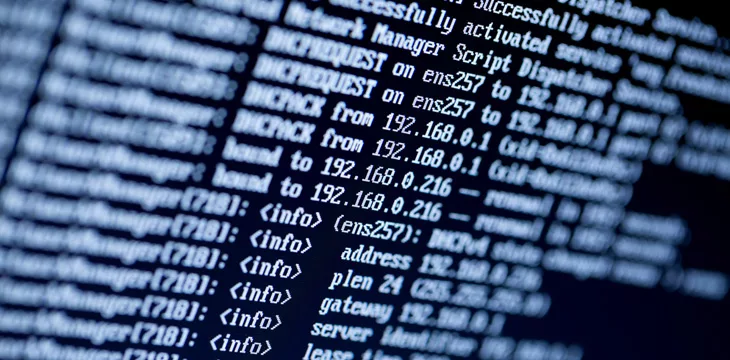|
Getting your Trinity Audio player ready...
|
This post originally appeared on ZeMing M. Gao’s website, and we republished with permission from the author. Read the full piece here.
BTC can handle no more than 7 transactions per second (TPS). Lightning Network (LN) promises to solve the problem. The theory is that normal transactions would only happen in LN, but can get settled on the BTC chain occasionally.
Other than the fact that Lightning Network does not work, just a little bit of math would reveal the inescapable scaling problem of BTC:
At 7 TPS, roughly, each person in the world gets to do just one on-chain transaction in a lifetime.
Not such a free and bright future.
Here is another way to look at this:
Essentially every transaction that needs either finality or accountability (either, not both) will need to settle on Layer-1.
Arguing that an average person only needs to do one such transaction in his entire life is much worse, even than thinking that IPv4 was going to be enough for the whole world.
There are about 3 billion IPv4 addresses available (out of the theoretical 4.3 billion). Initially, people said that was more than enough. Then quickly, they realized it was not enough. But then they argued that a shared IP address is going to be the solution. But they didn’t know (most people still don’t know today); they unnecessarily forced the digital humanity into a cage that was not only too small but also a perfect environment that invites impoverishing abuses.
The reason: IPv4 essentially made IP-to-IP transactions impractical. And as a result, the limitation of IPv4 became a major culprit of today’s centralized web because shared IP addresses made centralization seem expedient and almost necessary.
The lack of an Internet-native payment method integrated at the TCP/IP level was another co-culprit.
That was history.
Today, finally, we have solutions for both the above problems, specifically IPv6 to replace IPv4 and a scalable public blockchain integrated with IPv6 at TCP/IP to support IP-to-IP transactions.
But people are now claiming that 5-7 TPS on-chain is going to be enough, as everything can be moved onto an insecure ‘commune’ to share the limited on-chain resources!
To those who understand tech history and economics, this should sound familiar.
People are so easily persuaded by vague ideas pumped with ideological narratives without actually understanding any reality of the human society and economy, the sheer size of it, the level of activity of it, and the far-reaching potential of it.
Today, credit cards alone have around 10,000 TPS on average globally. And that is just credit cards. People who support Lightning Network are incorrectly assuming that most credit card transactions do not need either finality or accountability and, therefore, can be handled on Lightning Network. That assumption is made based on ignorance of the human reality.
This is the reality:
(1) The vast majority of today’s transactions, including credit card transactions, will benefit from, thus require, finality and accountability, and therefore need to be settled timely, if not instantly. These should be all on L1.
(2) The kind of transactions that do not need finality and accountability aren’t even happening today because we have not provided an adequate system to enable them. But Bitcoin (BSV) with both L1 and L2 will enable them.
The real Bitcoin solution is not only to improve the existing transactions but also to enable people to invent new kinds of transactions that are impossible and even unimagined today.
The pictures of two different worlds:
BTC: L1 TPS 5-7, promising somewhat greater TPS on Lightning Network, which is insecure and has unproven scalability even in principle, let alone in reality (because the network that requires multi-hops is intrinsically NP-hard to scale)
BSV: L1 TPS in billions, and L2 TPS unlimited using payment channels and overlay networks.
How is L1 TPS in billions possible?
The above is about the future, not the present time. But 1 billion TPS is not a random number without any reasoning.
In the long term, a billion TPS is both needed and feasible.
For the necessity, please see the linked article: The necessary scalability of Layer-1 on blockchain.
For the feasibility:
Due to parallelization and unbounded block size, there is no theoretical limit to the L1 TPS on BSV, but only engineering limitations.
The first is the data transmission rates among major nodes. At 1 billion TPS, it would require a data transmission rate somewhere between 250GB/s – 1TB/s. This is going to be a huge challenge, but it is well within the current technological parameters. For your information, the record data transmission over the Internet established so far is over 40 TB/s. Admittedly, it was done in controlled conditions. But it shows the potential and boundaries we currently face.
Secondly, big block transmission at that scale will require IPv6 multicasting to be established among the major nodes as a highly connected multicast group. Guess which blockchain has focused on IPv6 and its integration with blockchain at TCP/IP level? Certainly not the ones that think blockchains are applications built and operating in the application layer of the Internet.
But those are just basic requirements. The big block engineering opens up a rich innovation field of techniques for actual transaction in-taking and processing, mempool management, microservices, etc. Guess who has been heavily invested in this field in the last seven years? Certainly not those who only want to process blocks of a few megabytes.
See more: The necessary scalability of Layer-1 on blockchain.
Watch: How to use IPv6 and Bitcoin

 12-14-2025
12-14-2025 





